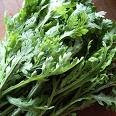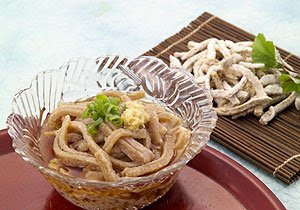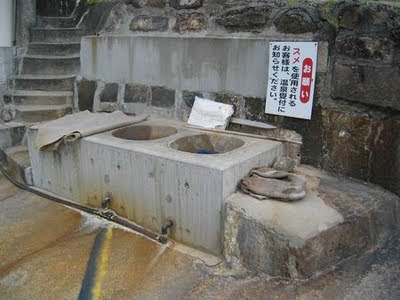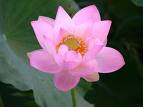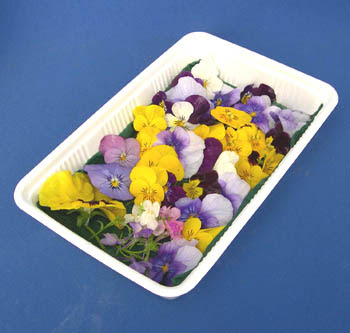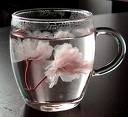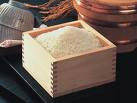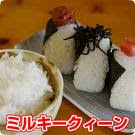::::::::::::::::::::::::::::::::::::::::::::::::::::::::::::::::::::::::::::::::::::::::::::::::::::
Taro (sato-imo)
***** Location: Japan
***** Season: All Autumn
***** Category: Plant
*****************************
Explanation
taro 芋 (いも) imo
Colocasia antiquorum Schott var. esculenta
imo is also used in combination for all kinds of other potatoes.
In contrast to the YAM (yama imo) which grows in the mountains, this was also called
"root from the village", satoimo, sato imo 里芋
taro imo タロ芋
But in Northern Japan there are some areas where this plant is called "yama imo".
In Kyushu, the word IMO came to indicate the sweet potato (Satsuma imo).

imo batake 芋畑(いもばたけ)fiels of taro
oyaimo 親芋(おやいも)parent taro
koimo 子芋(こいも)child taro
dotare 土垂(どたれ)"hanging on the ground"
kinu katsugi 衣被ぎ(きぬかつぎ)
unblemished taro, they are boiled in the skin
lit. "wrapped in cloth"
imo no aki 芋の秋(いものあき)autumn of the taro
... imo aki 芋秋(いもあき)
Bungo imo 豊後芋(ぶんごいも)taro from Bungo
Yoshihama imo 吉浜芋(よしはまいも)taro from Yoshihama
Yoshino imo 吉野芋(よしのいも)taro from Yoshino
dango imo 団子芋(だんごいも)taro for balls
shiro imo 白芋(しろいも)white taro
shigami imo しがみ芋(しがみいも)
futo imo 太芋(ふといも)thick taro
akame imo 赤芽芋(あかめいも)taro with red buds
taimo, ta imo 田芋(たいも)taro in the field
eguimo, egu imo 蘞芋(えぐいも)、
hasu imo 蓮芋(はすいも)"taro like lotus"
satoimo dengaku 里芋田楽(さといもでんがく)
with miso paste

zuiki、芋茎(ずいき)stem of the taro
zuiki imo ずいき芋(ずいきいも)zuiki taro
imogara 芋がら(いもがら) , imo no kuki 芋の茎
ZUIKI 随喜 can also mean "to weep with joy", and this name reminds us of a poem by the priest Muso Kokushi 夢窓国師 about this plant, hence the name.
. . . . Zuiki matsuri ずいきまつり Taro and Vegetable Festival
and more about Muso Kokushi !
In Okinawa they are called "field potato",
"tanmuu" 田芋(タンムー).
. . . Different types of satoimo
yatsugashira ヤツガシラ / 八つ頭
serebesu セレベス Celebes
kyooimo 京芋 "potatoes from Kyoto"
ebiimo エビ芋 "shrimp potato"
Yahataimo, Yahata-imo やはたいも taro from Yahata
This is a specially tasty kind from Yamanashi prefecture. After Takeda Shingen had build a dam against the river, the earth, full of debris, was very suitable for vegetables which like water, but not wet feet.
Some farmers in the 7th generation grow these special potatos, which even make their way to expensive restaurants in Kyoto.
CLICK here for PHOTOS !
Varying with the root, the parent root or the child roots are eaten.
from one satoimo サトイモ there are some generations
oyaimo 芋(おやいも) parent potato
koimo 子芋 child potato
magoimo 孫芋 grandchildren potato

© PHOTO : ikimono8000
:::::::::::::::::::::::::::::::::::::::::::::::::::::::::::::::::::::::::::::::::::::::::::::::::::
quote
Taro is a tropical plant grown primarily as a vegetable food for its edible corm, and secondarily as a leaf vegetable. It is considered a staple in oceanic cultures. It is believed to be one of the earliest cultivated plants. In its raw form the plant is toxic due to the presence of calcium oxalate, although the toxin is destroyed by cooking or can be removed by steeping taro roots in cold water overnight. Taro is closely related to Xanthosoma and Caladium, plants commonly grown as ornamentals, and like them it is sometimes loosely called elephant ear. The name "taro" is from Tahitian or other Polynesian languages; the plant is also called kalo (from Hawaiian), gabi in The Philippines, dalo in Fiji, seppankizhangu in Tamil, and Karkalo in Nepali.
JAPAN
In Japan,it is called satoimo (サトイモ ,satoimo); kanji: 里芋; literally "sato potato". It is often simmered. The size and shape is like a brussels sprout. The child satoimo and grandchild satoimo are called imonoko (芋の子 ).
Satoimo is believed to have been propagated from Southeast Asia in the late Jōmon period and it was one of the staple foods before rice became predominant.
Philippines
In the Philippines, taro is called gabi.
© More in the WIKIPEDIA !
:::::::::::::::::::::::::::::::::::::::::::::::::::::::::::::::::::::::::::::::::::::::::::::::::::
Ishikawa imo 石川芋 taro from Ishikawa
Ishikawa is a small town near Osaka.
They are round and about 4 cm in diameter and taste rather "umai". They are exported to many markets in West-Japan. They taste good when steamed with the skin, then peeled and sprinkled with salt.
. . . CLICK here for Photos !
:::::::::::::::::::::::::::::::::::::::::::::::::::::::::::::::::::::::::::::::::::::::::::::::::::
koimo, ko-imo 小芋 "small taro potato"
Especially used for dished during the full moon party time in Autumn, in Kyoto since the Heian period.
. . . CLICK here for Photos !
koimo nori-ae : Taro Potatoes Rolled in Crumbled Seaweed
There is also a sweet for the moon-viewing parties of the same name, so be careful not to mix it.
::::::::::::::::::::::::::::::::::::::::::::::::::::::::::::::::::::::::::::::::::::::::::::::::::::
takenokoimo, take no ko imo たけのこいも / 竹の子芋
taro "like bamboo shoots"
"bamboo shoot satoimo", Japanese taro corn
佐賀県 from Saga prefecture
They look like a bamboo shoot and have to be peeled like one to get to the delicious parts to eat.
Also called Kyooimo, Kyoo imo 京いも.
. . . CLICK here for Photos !

tsurunokoimo, tsuru no ko imo 鶴の子芋
"like a baby crane"
It has a longish form like a small crane.
Used for Takamori Dengaku 高森田楽 dishes.
They will help prevent a couple from fighting (fuufu kenka), because you have to watch the ingredients grilling on the other side of the open hearth (irori) to see that all is grilled equally ... and so peace in the family is kept.
CLICK here for PHOTOS !
From 阿蘇高森田楽の里, Kumamoto
:::::::::::::::::::::::::::::::::::::::::::::::::::::::::::::::::::::::::::::::::::::::::::::::::::
Food with taro roots 里芋料理
. . . CLICK here for Photos !
Dentooji satoimo 伝灯寺里芋 sato imo from temple Dentoji
from Kanazawa, Kaga food, Ishikawa prefecture
imoni kai 芋煮会 meeting to cook taro in autumn
In Yamgagta, Miyagi, Shimane.
. . . CLICK here for Photos !
Imoni with Yonezawa beef
imoni nabe いも煮鍋
imonijiru 芋煮汁
imo ohagi いもおはぎ dumplings made from potatoes
and other satoimo ryori
..... satoimo no oyaki 里芋のおやき
..... satoimo no nimono 里芋・大根・いかの煮物
..... satoimo no goma-ae 里芋のごま和え
..... satoimo no dengaku 里芋の田楽
from Toyama
imotako 芋蛸 いもたこ octopus and satoimo potatoes
from Kagawa
kinukatsugi, kinu katsugi 衣被 (きぬかつぎ)
cooked satoimo taro potatoes
The name means a silk robe of a lady of the Heian period aristocracy.
A special kind of potato (satoimo 里芋) is cooked with the peel (the "silk robe"), then the peel is taken off and the mash slightly salted.
They are usually served for the tsukimi moon viewing parties in Autumn.
CLICK here for Photos !
noppeijiru のっぺい汁 soup with taro, carrots and konnyak
Often made for the harvest festival and for the New Year celebrations.
. . . CLICK here for Photos !
satoimo dengaku 里芋田楽(さといもでんがく)
satoimo no nikorogashi 里芋の煮ころがし
"simmered and rolled" taro, in soy sauce, mirin and dashi.
This was the "taste of mother" (ofukuro no aji) until the advent of potatoes and "nikujaga" became more popular.
. . . CLICK here for Photos !
yatsugashira やつがしら/ 八頭 "eight heads"
type of taro
Colocasia antiquorum Schott. var. esculenta
. . . CLICK here for Photos !
This is served as an auspicious food to people who are supposed to "lead others" (hito no ue ni tatsu), like a parent potato with many children potatoes around him.
Served for the New Year.
zuiki no nutaae ずいきのぬたあえ
satoimo potato stems with vinegared miso paste
from Kagawa
. . . CLICK here for Photos !
Dried zuiki was a food ration in castles of the Edo period, since it kept well and provided some vitamins.
More dishes with 里芋
*****************************
Worldwide use
Germany
Taro-Kartoffel
yamaimo - Jamswurzel (Duden spelling), Yamswurzel
satsumaimo - Süßkartoffel
:::::::::::::::::::::::::::::::::::::::::::::::::::::::::::::::::::::::::::::::::::::::::::::::::::::
Philippines
gabi (English: taro)
is a tuberous plant. It's a root crop. The tubers (roots) differ in color and size. A seize of about 30 cm long, is possible. The flesh inside is white. The taste of both leaves and tuber is acid. Cooking (with the skin removed) or baking takes this acid taste away. It is a native vegetable of India and parts of South-East Asia. The leaves are used in soups and stews, the cooked tuber is consumed as sweets, desserts or used in vegetable dishes.
Philippines : GABI
soup with taro
my homework gone cold
on the table
soup with taro
the deep lines
on our cook's face
Ella Wagemakers, May 2009
*****************************
Things found on the way
tsukimi dango from Nagoya 名古屋 月見団子 dumplings in three colors
for moon viewing
In the shape of taro roots.
*****************************
HAIKU and SENRYU
命こそ芋種よまた今日の月
inochi koso imo dane yo mata kyoo no tsuki
Read the discussion of this hokku :
. Matsuo Basho 松尾芭蕉 - Archives of the WKD .
:::::::::::::::::::::::::::::::::::::::::::::::::::::::::::::::::::::::::::::::::::::::::::::::::::::

衣かつぎ冬への笑いをたくわえる
kinu-katsugi fuyu e no warai o takuwaeru
taro in the skin -
we store our laughter
for winter
Tsujimoto Sachiko 辻本幸子
source : www.ami-yacon.jp
:::::::::::::::::::::::::::::::::::::::::::::::::::::::::::::::::::::::::::::::::::::::::::::::::::::
Taro roots (sato imo) were prepared as offerings, and moon-viewing doubled as a harvest festival. This became so widespread that the full moon in mid-fall also came to be known as imo meigetsu.
imo meigetsu 芋名月 "Sweet Potato Full Moon"
kigo for mid-autumn
*****************************
Related words
bareisho 馬鈴薯 ばれいしょ potato
... jagaimo じゃがいも, ジャガイモ Kartoffel
kansho 甘藷 (かんしょ) sweet satsuma potato
さつまいも, サツマイモ
:::::::::::::::::::::::::::::::::::::::::::::::::::::::::::::::::::::::::::::::::::::::::::::::::::::
kigo for mid-spring, humanity
imo uu 里芋植う planting taro
sato-imo uu 里芋植う(さといもうう)
taneimo, tane-imo 種芋(たねいも)seed potato (Taro-Saatkartoffel)
imo no me芋の芽(いものめ)buts of the taro plant
imo nae 藷苗(いもなえ)taro seedlings
:::::::::::::::::::::::::::::::::::::::::::::::::::::::::::::::::::::::::::::::::::::::::::::::::::::
. Kobayashi Issa 小林一茶 in Edo .
芋の葉や親碗程の露の玉
imo no ha ya oya wan hodo no tsuyu no tama
taro leaf --
this dewdrop would fill
a rice bowl
This lunar autumn hokku is from the seventh month (August) of 1813, the year Issa moved back to his hometown. On 6/18 a boil on his hip became so bad during a trip that he had to stop and recuperate at the house of a student in a nearby town, and he was receiving treatment there when this hokku was written. Issa's recuperation took seventy-five days in all. He was nevertheless sometimes cheerful, and for the Star Festival on 7/7 he wrote:
utsukushi ya shooji no ana no amanogawa
magnificent --
the Milky Way through
a hole in the paper door
Unable to go outside, Issa tries to see the night sky through a hole in the paper on the wood-frame and paper sliding door that stands closed between his room and the garden outside. The narrow, constricted view and his own inability to move seem by contrast to make the Milky Way even more beautiful and moving than when he could easily watch the whole sky.
Taro leaves play an important part in the Star Festival, since the dew left on them in the morning is, according to legend, spilled on them during the night by the Milky Way. For this reason, people use dew collected from taro leaves to mix heaven-given ink and then write down their prayers to the star gods of the festival. In the first hokku above, however, Issa also seems to be thinking of the ancient homophony of the word for dew or water drop (tama) and the word for soul and life (tama). These meanings were commonly overlapped in Japanese poetry and prose, and Issa several times in hokku in this part of his diary uses tama to refer to the autumn dew outside, to his own life and soul, and to the soul of a haikai poet named Matsui, who belonged to the same Katsushika school of haikai to which Issa belonged when he was young. Matsui had died in the fifth month of 1813, so his soul was returning to its first O-Bon (Tama-matsuri) or Festival for Returning Souls in the middle of the seventh month, and Issa wrote several hokku that seem to refer to Matsui's soul as well as to his own mortality. The first hokku above is placed among these hokku.

Taro leaves are very large and usually heart-shaped. Many of them are also deep in the center and suggest large green cups or bowls. Issa says that one or more tama or drop of dew is on the leaf, and I take it to be mainly a single large drop, with most of the separate dewdrops having rolled downward and collected in the deepest part of the leaf. The image of a single large dewdrop much larger than normal also fits with the tenor of several hokku near this hokku in Issa's diary that suggest the importance of living on even though autumn is deepening. Issa might be thinking of his own life and soul (tama) as a gift from heaven, the Milky Way, and the universe and hoping it is large enough to allow him several more years of life in his hometown, to which he has just returned. Possibly Issa might also be thinking of a very large drop of dew as a healing counter-image to his large, pus-oozing boil. And several other readings suggest themselves. This vigorous hokku seems almost spherical in terms of its meanings.
Chris Drake
:::::::::::::::::::::::::::::::::::::::::::::::::::::::::::::::::::::::::::::::::::::::::::::::::::::
***** WASHOKU :
YASAI . Vegetable SAIJIKI
MORE
WASHOKU : AUTUMN VEGETABLES
:::::::::::::::::::::::::::::::::::::::::::::::::::::::::::::::::::::::::::::::::::::::::::::::::::::
[ . BACK to DARUMA MUSEUM TOP . ]
[ . BACK to WORLDKIGO . TOP . ]
:::::::::::::::::::::::::::::::::::::::::::::::::::::::::::::::::::::::::::::::::::::::::::::::::::::
